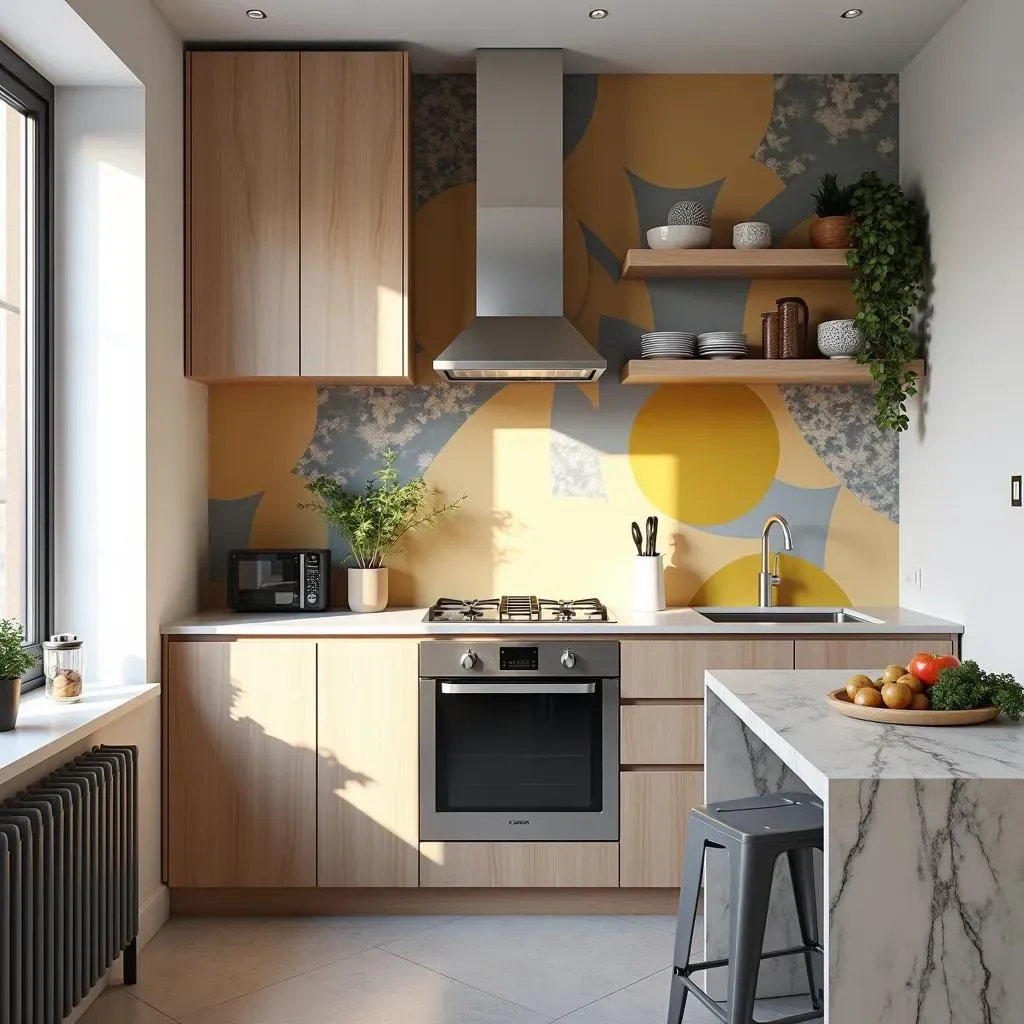Table of Contents
Ready to give your kitchen a stunning makeover without a major renovation? Let's explore the amazing world of "wallpaper accent wall ideas for kitchen"! This article is your ultimate guide to transforming your cooking space into a stylish and personalized haven. We'll walk you through selecting the perfect wallpaper to match your kitchen's style and your personal taste, from subtle textures to bold patterns. Discover creative design ideas to make your accent wall truly pop, whether you're aiming for a modern, rustic, or eclectic look. We'll also cover practical tips and tricks for a smooth wallpaper installation, ensuring a professional finish without the hefty price tag. And for those who want to explore beyond wallpaper, we'll share some alternative accent wall ideas to inspire your creativity. Get ready to unleash your inner designer and create a kitchen you'll love coming home to!
Choosing the Right Wallpaper for Your Kitchen
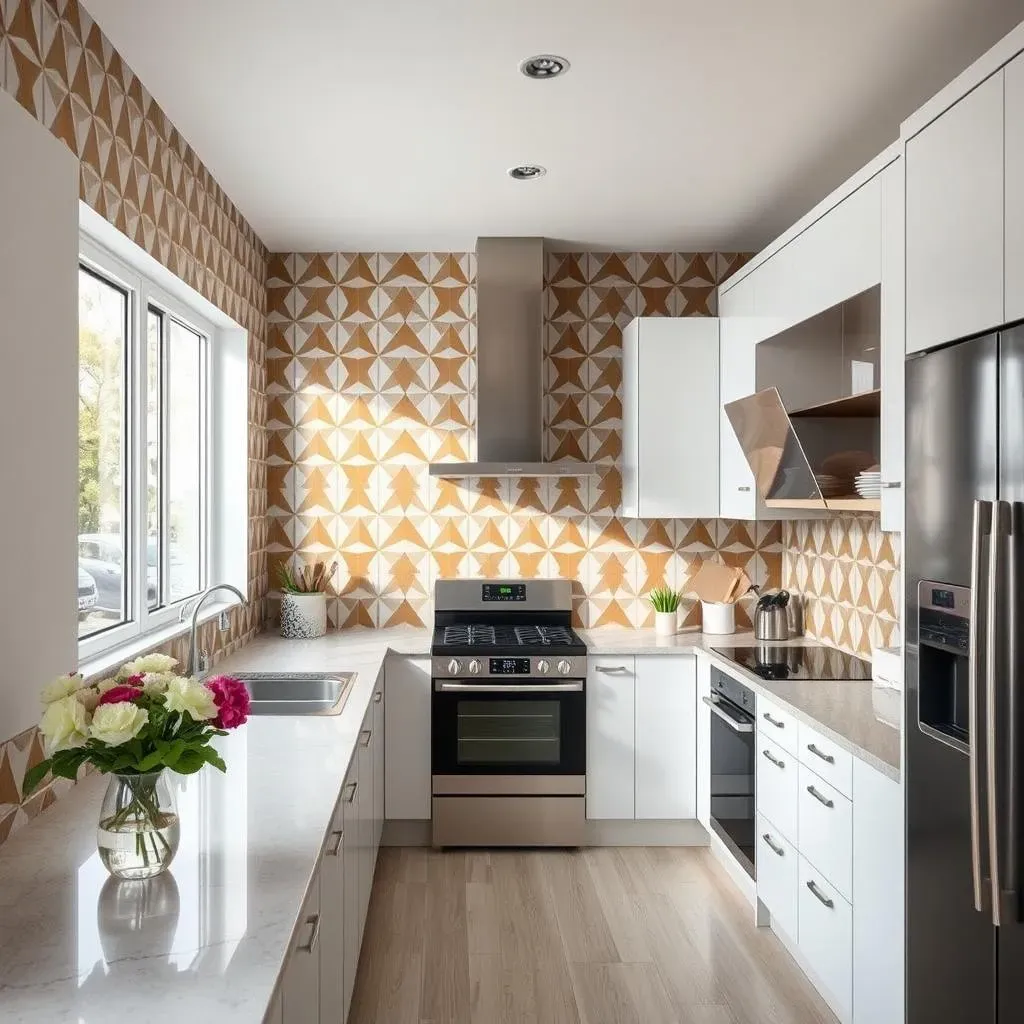
Choosing the Right Wallpaper for Your Kitchen
Picking the perfect wallpaper for your kitchen is like choosing the perfect outfit – it needs to be both stylish and practical! Think about your kitchen's style. Is it modern and minimalist? Or maybe cozy and rustic? A bold geometric pattern might look amazing in a modern kitchen geometric wallpaper ideas, while a delicate floral print would be charming in a country-style kitchen. Floral wallpaper ideas are always a good choice.
Kitchen Style | Wallpaper Style Suggestion |
|---|---|
Modern | Geometric, abstract, metallic |
Rustic | Floral, textured, wood-look |
Traditional | Damask, stripes, classic patterns |
Next, consider the amount of light in your kitchen. Darker kitchens benefit from lighter wallpapers to brighten the space, while brighter kitchens can handle bolder colors and patterns. Think about the mood you want to create. Do you want a calming, relaxing atmosphere? Or something energetic and exciting? The right wallpaper can totally set the tone. For instance, a calming pastel shade might be ideal for a breakfast nook, while a vibrant color could energize your cooking area. Don't forget about the practicality – choose a wallpaper that's easy to clean, especially if you have kids or pets! Some wallpapers are even wipeable, making them perfect for high-traffic areas. If you're unsure about your choice, you can always check out our other ideas for living room walls for inspiration.
- Consider your kitchen's style (modern, rustic, traditional)
- Think about the amount of natural light
- Choose a wallpaper that's easy to clean and maintain
"The best wallpaper is one that reflects your personality and enhances your kitchen's functionality." -Anonymous Interior Designer
Styling Your Wallpaper Accent Wall: Design Ideas
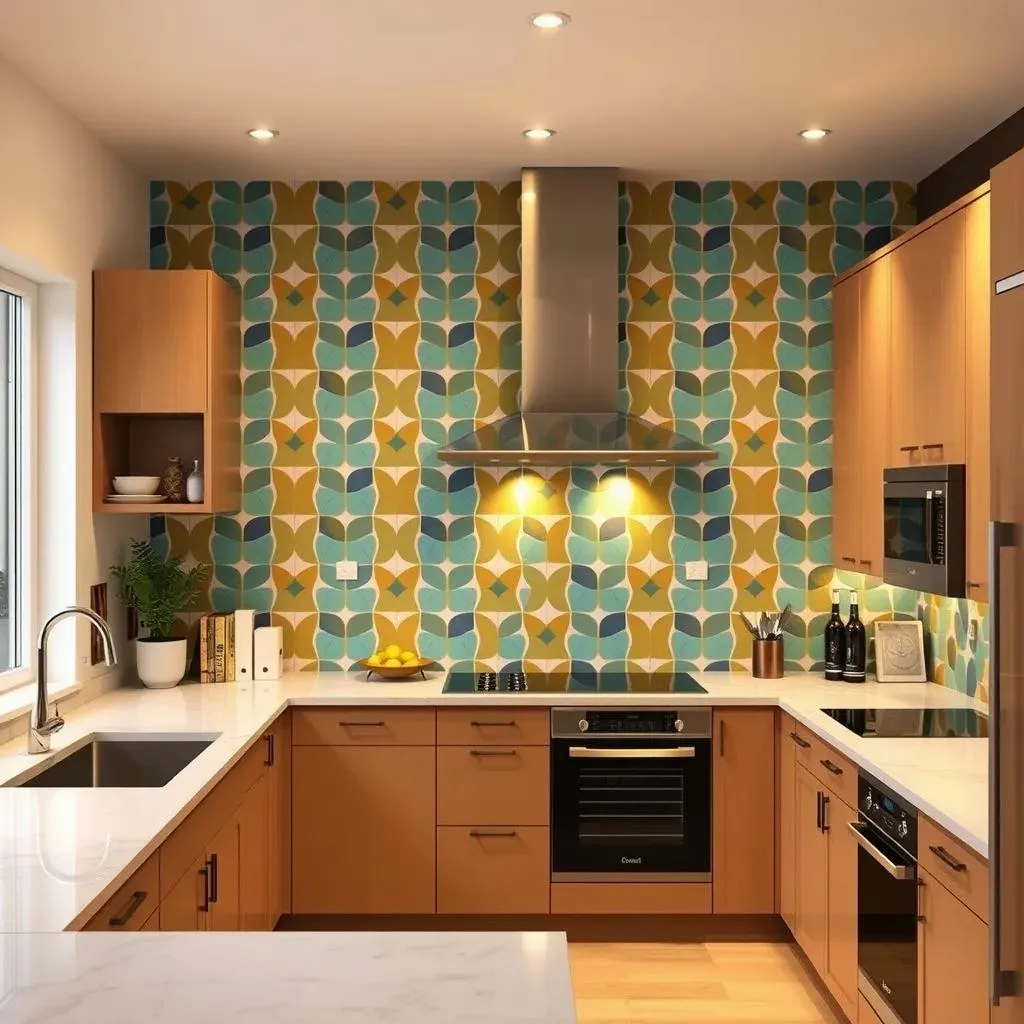
Styling Your Wallpaper Accent Wall: Design Ideas
Creating a Focal Point
Think of your wallpapered accent wall as the star of the show! It should be the first thing people notice when they enter your kitchen. To achieve this, consider using a bold pattern or a striking color that contrasts with the rest of your kitchen's décor. Maybe you have neutral-colored cabinets? A vibrant wallpaper will really make them pop! Or perhaps you're feeling adventurous? A large-scale mural could be the perfect conversation starter. Don't be afraid to experiment! Check out some mural wallpaper ideas for inspiration. Remember, this is your chance to showcase your personality and create a space that’s uniquely you.
- Use a bold color or pattern
- Consider a large-scale mural
- Let your wallpaper reflect your personality
Playing with Patterns and Textures
Patterns and textures add so much visual interest to a room. A geometric pattern can create a modern and sophisticated look, while a textured wallpaper can add depth and dimension. Consider the size of your kitchen when choosing a pattern. Small-scale patterns work well in smaller kitchens, while large-scale patterns can make a big statement in larger spaces. You could even mix and match! Try pairing a patterned wallpaper with a textured one for a truly unique look. For more patterned options, explore our patterned wallpaper ideas page.
Pattern | Effect |
|---|---|
Geometric | Modern, sophisticated |
Floral | Romantic, charming |
Abstract | Bold, artistic |
Highlighting Architectural Features
Your accent wall doesn't have to be just a blank canvas. Use it to highlight existing architectural details, like a built-in shelving unit or a fireplace. A wallpaper with a subtle pattern or texture can complement these features without overpowering them. If you have a recessed area, consider using a wallpaper with a darker shade to create a cozy nook. Or, if you've got a large, empty wall, a wallpaper with a linear pattern can create the illusion of height and space. Need ideas for other rooms? Check out our ideas for dining room walls for more inspiration.
Practical Tips for Wallpapering Your Kitchen Accent Wall
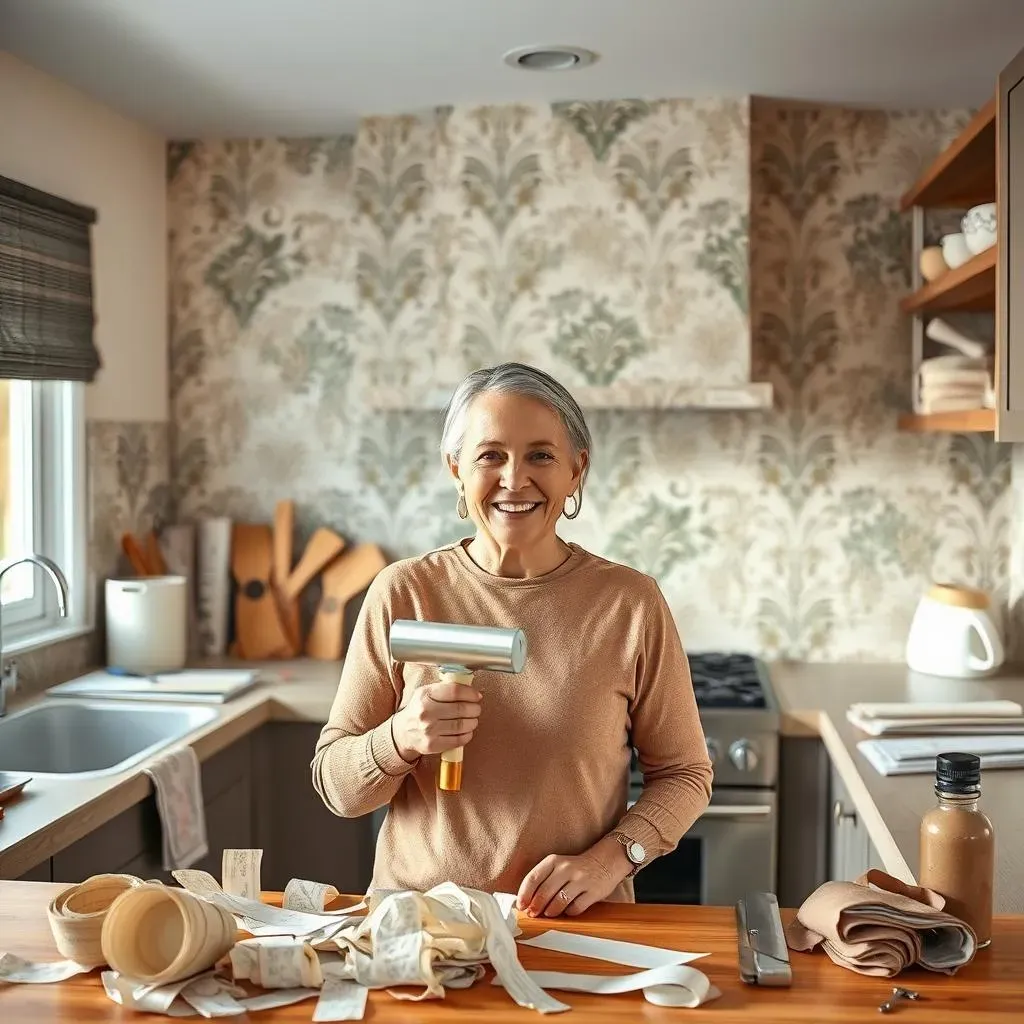
Practical Tips for Wallpapering Your Kitchen Accent Wall
Prep Work is Key
Before you even think about pasting that first strip, make sure your wall is perfectly prepped. This means cleaning it thoroughly to remove any grease or grime – think about all those cooking splatters! Then, fill any holes or cracks with spackle and sand them smooth. A smooth surface is crucial for a seamless wallpaper application. Don’t skip this step – trust me, your future self will thank you. A poorly prepped wall will show through your beautiful wallpaper, and that’s a major bummer. For more ideas on prepping walls for other rooms, check out our tips for hallway walls here.
- Clean the wall thoroughly
- Fill and sand any holes or cracks
- Ensure the wall is smooth and dry
Measuring and Cutting: Precision is Paramount
Accurate measurements are essential to avoid any awkward mismatches or needing to cut extra pieces. Measure the height and width of your accent wall carefully. Then, add a few extra inches to account for trimming and matching patterns. Cutting your wallpaper precisely is key for a clean, professional look. Use a sharp utility knife and a metal ruler for straight cuts. Patience is key here – rushing this step will lead to mistakes! Take your time, and double-check your measurements before you start pasting. If you're struggling with pattern matching, our patterned wallpaper ideas page has some helpful tips.
Step | Action |
|---|---|
1 | Measure the wall accurately |
2 | Add extra inches for trimming |
3 | Cut the wallpaper precisely |
Pasting and Hanging: A Step-by-Step Guide
Now for the fun part – actually putting up the wallpaper! Follow the manufacturer's instructions carefully. Some wallpapers require paste to be applied to the wall, others to the wallpaper itself. Work slowly and methodically, ensuring each strip is lined up perfectly with the previous one. Use a smoothing tool to remove any air bubbles and ensure the wallpaper adheres smoothly to the wall. Don't be afraid to ask for help if needed! Having a friend assist can make the process much easier and faster. For more advanced techniques, you might find our guide to 3D wallpaper helpful, even if you aren't using that specific type.
Beyond Wallpaper: Other Kitchen Accent Wall Options (check out our ideas for office walls!)
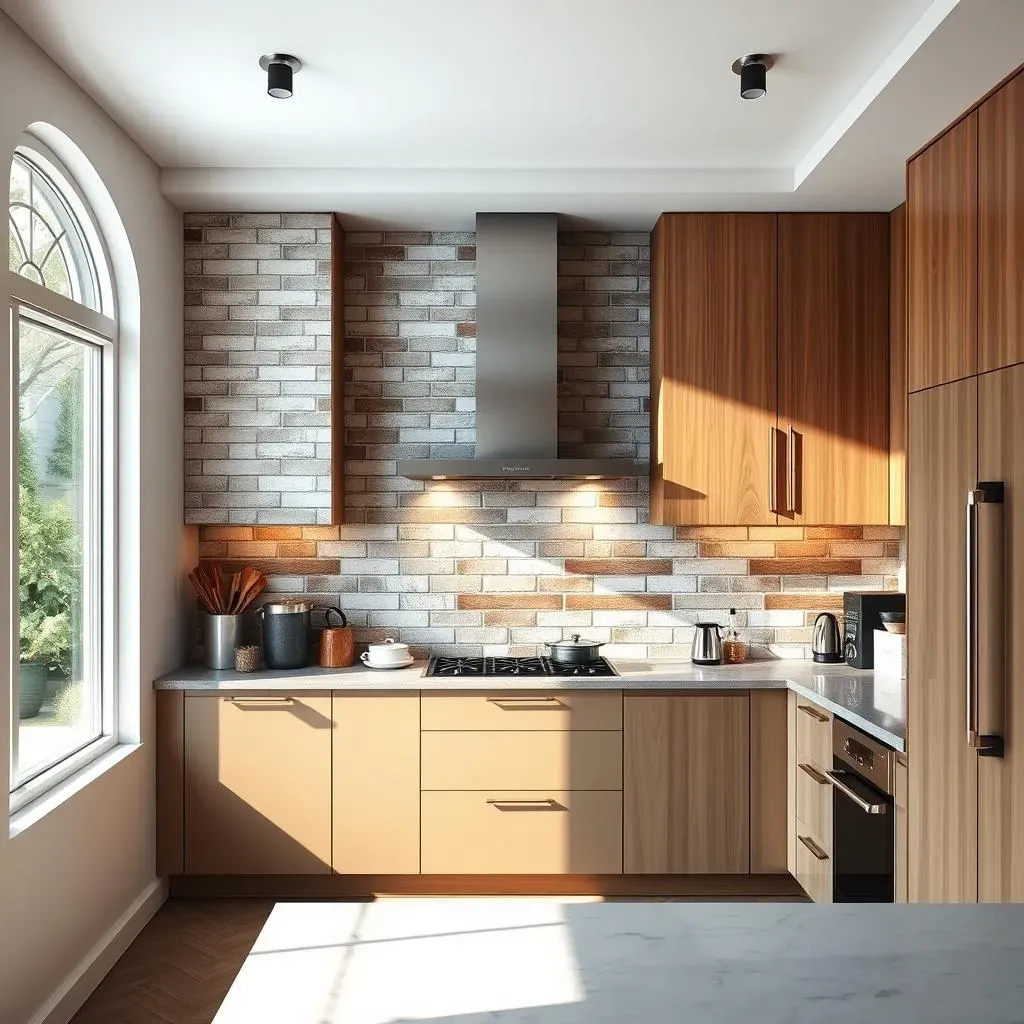
Beyond Wallpaper: Other Kitchen Accent Wall Options (check out our ideas for office walls!)
Beyond wallpaper, a world of exciting kitchen accent wall options awaits! Think about the impact of a stunning backsplash – subway tiles create a classic look, while bolder, patterned tiles can make a real statement. Or how about adding a touch of rustic charm with exposed brick? If you’re feeling ambitious, consider a DIY project like shiplap or wood paneling for a warm, inviting feel. These options offer durability and a unique texture, unlike wallpaper. For a sleek and modern touch, consider metallic accents like stainless steel or copper sheeting. They reflect light beautifully, adding a touch of sophistication to your kitchen. For inspiration on office spaces, check out our office wall ideas.
- Subway tiles: Classic and versatile
- Patterned tiles: Bold and eye-catching
- Exposed brick: Rustic and charming
- Shiplap or wood paneling: Warm and inviting
- Metallic accents: Sleek and modern
Remember, the best accent wall option depends on your kitchen's style, your personal preferences, and your budget. Don't be afraid to experiment and find what works best for you. Consider the overall aesthetic you're aiming for. Do you want something minimalist and clean? Or something more textured and eclectic? The right materials can dramatically change the atmosphere of your kitchen. Perhaps you're considering a more dramatic change? A chalkboard wall is both practical and visually engaging, providing a space for notes or artwork. Or maybe you're looking for something more artistic? A painted mural can be a fantastic way to express your creativity and add a unique touch to your kitchen. For more ideas, check out our mural ideas.
Material | Style | Pros | Cons |
|---|---|---|---|
Subway Tile | Classic, Modern | Easy to clean, durable | Can be expensive |
Exposed Brick | Rustic, Industrial | Unique texture, character | May require maintenance |
Wood Paneling | Rustic, Farmhouse | Warm, inviting | Can be difficult to install |
